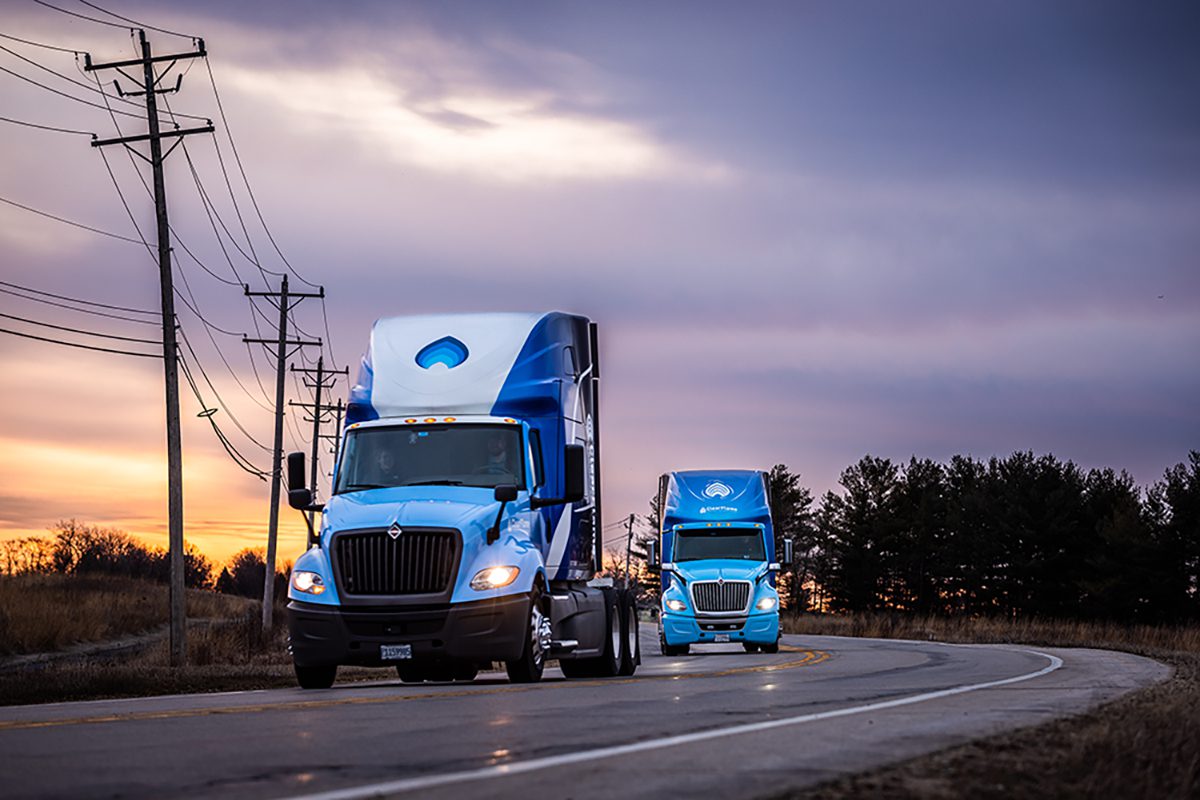While the future of fleets remains unwritten, many commercial carriers continue a high-speed search for ways to reduce emissions at a sustainable cost. Most of the solutions currently available cannot immediately meet all of fleets’ requirements, whether due to range, infrastructure availability, or cost.
“The clean vehicle/tech market finds itself amid a ‘sorting out’ of what technologies work for what markets. Many pilots are underway to gather data that helps determine the viability of these products and their ability to meet customer requirements,” said Craig Barnes, chief product officer at ClearFlame Engine Technologies, who came to the company after more than four decades in engineering, design, and development at manufacturers like Cummins and John Deere.
“The infrastructure needed to support technologies like EV remains very immature and, in some cases, unknown,” he added. “These conditions force fleets to place their ‘bets’ on an uncertain future, which puts additional pressure on already tight profit margins.”
Addressing the Misconceptions and Regulations
Groups like the American Trucking Association argue that the industry has worked for years to lower tailpipe emissions from trucks, specifically soot.
“The engine research and development community has reduced pollutants like soot by two orders of magnitude since emissions standards were implemented,” said Dr. Cathy Choi, chief sustainability officer and vice president of engineering at ClearFlame. Choi has nearly three decades experience, including leading technology and strategy development at Cummins and supporting Caterpillar’s global business strategy to meet net-zero greenhouse gas goals by 2050.
Choi notes, however, that the criteria pollutant reductions do not equate to meeting customer GHG goals. Additionally, fuels like H2 for engines are not yet cost-effective or ready for market use. This exacerbates the disconnect between carbon reduction targets and the market’s perceived ability to meet them, as do new more stringent and urgent federal and state goals for greenhouse gas emissions.
Barnes believes the industry will embrace GHG emissions reduction goals when they understand that smart business options are available to meet them now.
“We need to jump on the opportunity to draw on engine R&D experience and fully utilize expertise in low GHG, liquid fuels to provide an engine solution that substantially reduces GHG and is scalable now.”
While the pending U.S. Environmental Protection Agency (EPA) and California Air Resources Board (CARB) emissions standards appear to call the industry to embrace specific technologies like EV or hydrogen-fueled trucks, Dr. Choi noted that these technologies may not be ready for rapid adoption.
“Fleets have to prepare their workflow and invest in infrastructure while being wary of the ability to productionizing low readiness technologies,” said Dr. Choi.
Barnes said fleets feel pressured to analyze multiple solutions.
“This dilemma can be very costly in terms of money and time, as future technologies are at distinct stages of maturity. This means that fleets are caught in a transition where the vehicle/powertrain technology and the fueling infrastructure do not yet exist,” said Barnes.
Upfits Can Reduce Emissions Sustainably and Profitably
These issues provide an opportunity for upfits to help fleets meet their carbon-cutting goals.
“New low carbon technologies can give fleets an immediate way to reduce GHG more affordably and at a minimal impact to operations,” said Dr. Choi. “They also ensure heavy-duty trucks retain the high torque, efficiency, and durability benefits of diesel engines. Because EV or hydrogen may not be the right fit for all the applications or routes, we believe upfits afford fleets an immediate path forward.”
Barnes added, “The industry has learned how upfit options and incentives can facilitate emissions reductions. Comparable products exist to achieve greenhouse gas reduction needs. They also can ease concerns about projected costs of transitioning – costs that encompass the initial purchase price and operating expenses, especially the dollars lost to truck downtime.”
Choi and Barnes joined ClearFlame Engine Technologies in part because they believe the company’s innovations can address the industry’s critical needs for sustainability and profitability. the critical, immediate options that fleet need. ClearFlame’s technology is constantly being tested and perfected by engineers with more than 400 years of combined experience in the commercial engine sector and is now finalizing a successful first pilot and entering a second with two of the top 10 fleets in the U.S.
Their solution uses high-temperature, mixing-controlled compression ignition to create a FuelAdaptive engine, allowing a low-emission fuel to perform like diesel fuel. Renewable fuels, such as ethanol and methanol, are widely available and offer reduced emissions and lower total cost of ownership (TCO) than other carbon-reducing alternatives, thus providing a profitable path to lower emissions.
“TCO is extremely important and drives purchasing decisions,” said Dr. Choi. “In addition, low-carbon technologies like ClearFlame’s expand on the diesel engine core that has decades of validation, run on widely available liquid fuels, and utilize existing repair and maintenance resources.”
This upfit technology cuts downtime, eliminates the need for onsite infrastructure development, and makes it easier for fleet technicians to work on these vehicles, as 90% of the engine design and components remain the same.
To find out more about ClearFlame Engine Technologies’ solution, visit www.clearflame.com.


